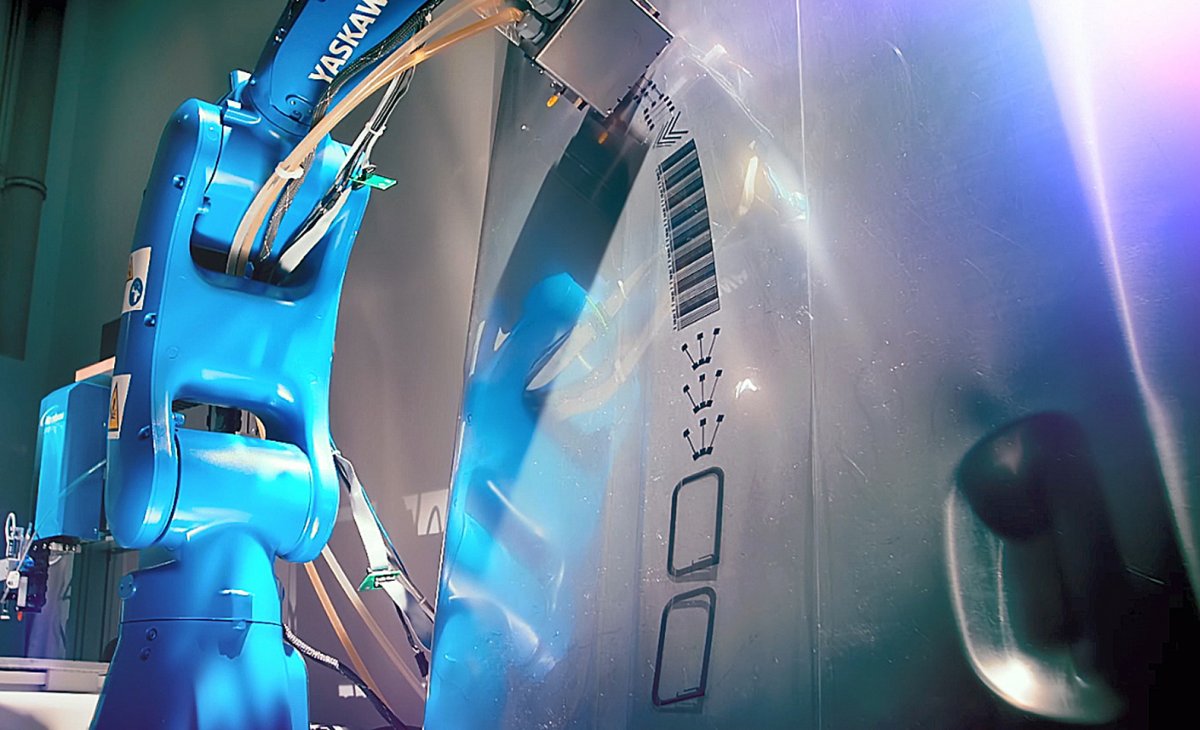How 3D printers can get better
Source: Heise.de added 16th Dec 2020Wouldn’t it be practical not only to draw individual plastic parts from a 3D printer, but also finished switches, sensors or lamps – without soldering, screwing or gluing? Such approaches have been around for a long time. But only very few have got beyond the laboratory stage, reports Technology Review in its January issue (to be ordered from Thursday at the kiosk or online).
The Israeli company Nano Dimension, on the other hand, has been offering professional 3D printers under the brand name DragonFly for years that produce conductor tracks and housings in a single pass. One printhead applies layers of conductive ink with silver nanoparticles, another embeds them in layers of insulating plastic. For the sensor manufacturer Hensoldt, for example, Nano Dimension produced a ten-layer, extremely densely packed circuit board. And together with the automotive supplier Rehau, it has developed an illuminated touch sensor that can be printed out in any form. Other applications include antennas or capacitors.
“The printing process enables an incredible range of new modeling technologies and enormous flexibility,” says Rehau, describing the advantages. “In addition, the housing can be produced directly in the printing process.”
Nano Dimension primarily advertises its machines for the rapid creation of prototypes: When development teams print out and test new designs on site, they can do more quickly and work more discreetly. The “top goal” for Rehau is also the printing of small series. “The process is only competitive with this application,” says Rehau. For larger quantities, conventional methods are cheaper.
The research association Go Beyond 4.0 wants to manufacture individualized products as efficiently as mass-produced goods. The project of six Fraunhofer institutes ran from 2016 to 2020. The results are several demonstrators, including car doors with individual cabling. First, a laser burns grooves in the sheet metal, in which the conductor paths will later run.
Then a print head attached to a robot arm prints insulating ink into this channel, which another laser hardens. The next step is conductive ink and finally another insulating layer. Not only can conductors be printed on any shape, but also switches, lights and other components. Due to the many possible equipment variants, most cars have long been unique, and wiring with classic cable harnesses is correspondingly complex. This is now superfluous thanks to the printing process.
With the Smart Wing demonstrator, the Fraunhofer researchers printed heating coils made of silver paste directly onto dry carbon fiber fabric. This allowed a two millimeter thick, minus 15 degree cold layer of ice to melt in six minutes.
This article is from issue 1 / 2021 of the Technology Review. The booklet is from 17. 12 . 2020 available in stores and directly in the heise shop. Highlights from the magazine:
Another demonstrator are LEDs with freely configurable lenses – so-called free-form optics. Installed in a bumper, they can project warning symbols onto the road. For production, the researchers combined 3D printing with finished electronic components from the shelf. While the conductor tracks and lens are being printed, the printheads pause, and a pick-and-place robot from the semiconductor industry places an LED the size of a dust particle in the right place. Laser scanners on the robot and markings on the component ensure that everything fits together exactly.
“Our know-how is the process parameters,” says Ralf Zichner from the Fraunhofer Institute for Electronic Nano Systems in Chemnitz. For example, surfaces and printing paths must be pre- and post-treated accordingly so that the ink does not run too heavily. A lot of fine-tuning was also necessary with the material, says Sönke Steenhusen from the Fraunhofer Institute for Silicate Research in Würzburg. For the free-form optics, the researchers developed a printable Ormocer plastic with a high inorganic content. It has similar properties to glass, is highly transparent and does not yellow. A problem that has not yet been resolved is the generation of heat, which is why the LEDs have so far only been used as indicators, not as headlights.
“An important aspect of our processes is that they can be integrated directly into conventional production techniques,” says Falk Kemper from the Fraunhofer Institute for Applied Optics and Precision Mechanics in Jena. However, it is difficult to say exactly how much the process would save compared to conventional manufacturing methods – manufacturers are reluctant to reveal their figures. His colleague Zichner adds: “We don’t have any customers because of Corona, but we have already been able to inspire partners.”
(bsc)
brands: Carbon Glass New other Reveal Smart Unique media: Heise.de keywords: Review Sensor
Related posts
Notice: Undefined variable: all_related in /var/www/vhosts/rondea.com/httpdocs/wp-content/themes/rondea-2-0/single-article.php on line 88
Notice: Undefined variable: all_related in /var/www/vhosts/rondea.com/httpdocs/wp-content/themes/rondea-2-0/single-article.php on line 88
Related Products
Notice: Undefined variable: all_related in /var/www/vhosts/rondea.com/httpdocs/wp-content/themes/rondea-2-0/single-article.php on line 91
Warning: Invalid argument supplied for foreach() in /var/www/vhosts/rondea.com/httpdocs/wp-content/themes/rondea-2-0/single-article.php on line 91
